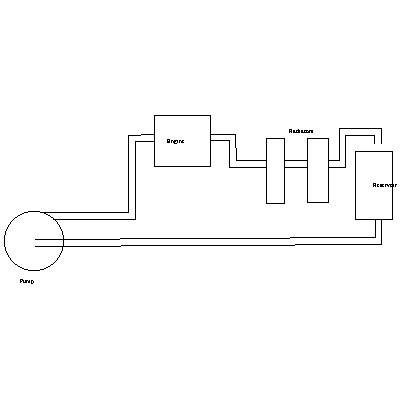|
|
In a message dated 10/12/2002 8:54:40 PM Central Daylight Time,
canarder@starband.net writes:
> Subj: [FlyRotary] Re: EWP water pump
> Date: 10/12/2002 8:54:40 PM Central Daylight Time
> From: canarder@starband.net (Jim Sower)
> Sender: flyrotary@lancaironline.net
> Reply-to: <A HREF="mailto:flyrotary@lancaironline.net">
flyrotary@lancaironline.net</A>
> To: flyrotary@lancaironline.net
>
> <... as any variability in the water head pressure to the pump will skew
> the test
> results ...>
> Do you really think so? I mean significantly? I would intuit that your
> task is to
> pump some certain minimum volume of water through the system. Say you had
a
> 5- or 10-
> gal supply tank, and kept the water level in the tank at about the
elevation
> of the
> input to the pump, and piped the output from the rads (right where it goes
> into the
> pump) up over the edge of the water tank. You could then turn on the pump
> and WATCH
> how much volume was pumped through the entire system. You're not
simulating
> pressure
> drop across the engine and radiators. You're observing the flow that you
> get in spite
> of all that resistance. In a closed system, it doesn't make any
difference
> what the
> system pressure is. In this test, you're using virtually no pressure at
the
> inlet
> side, and just a few inches at output. You could document it with a flow
> meter, but
> you'd get a pretty good go/no-go idea just watching it.
> Just a theory .... Jim S.
>
---------------------
Jim makes a good point, but it can be carried a little further with little
effort.
I have attached a GIF drawing, showing the plumbing modified to feed the pump
from a reservoir, pump through the engine and rads, and back to the
reservoir. With Todd's setup, this would be easy to do. Also, since it is
electric, you can turn it on and off easily.
A simple timed test, where you divert the water from the reservoir into a
separate bucket and measure the time for filling would give you a number for
the flow rate as well as the visual test that Jim mentioned. The change in
head of the reservoir can be minimized by making it larger, but probably not
a big deal. Since the pump is electric, you can just turn it on, and then off
at the same time as a stop watch, and get some pretty accurate numbers.
This way he doesn't have to take his assembly apart (other than one
connection)
Bill Schertz
KIS Cruiser #4045

Electric Pump test.gif
|
|